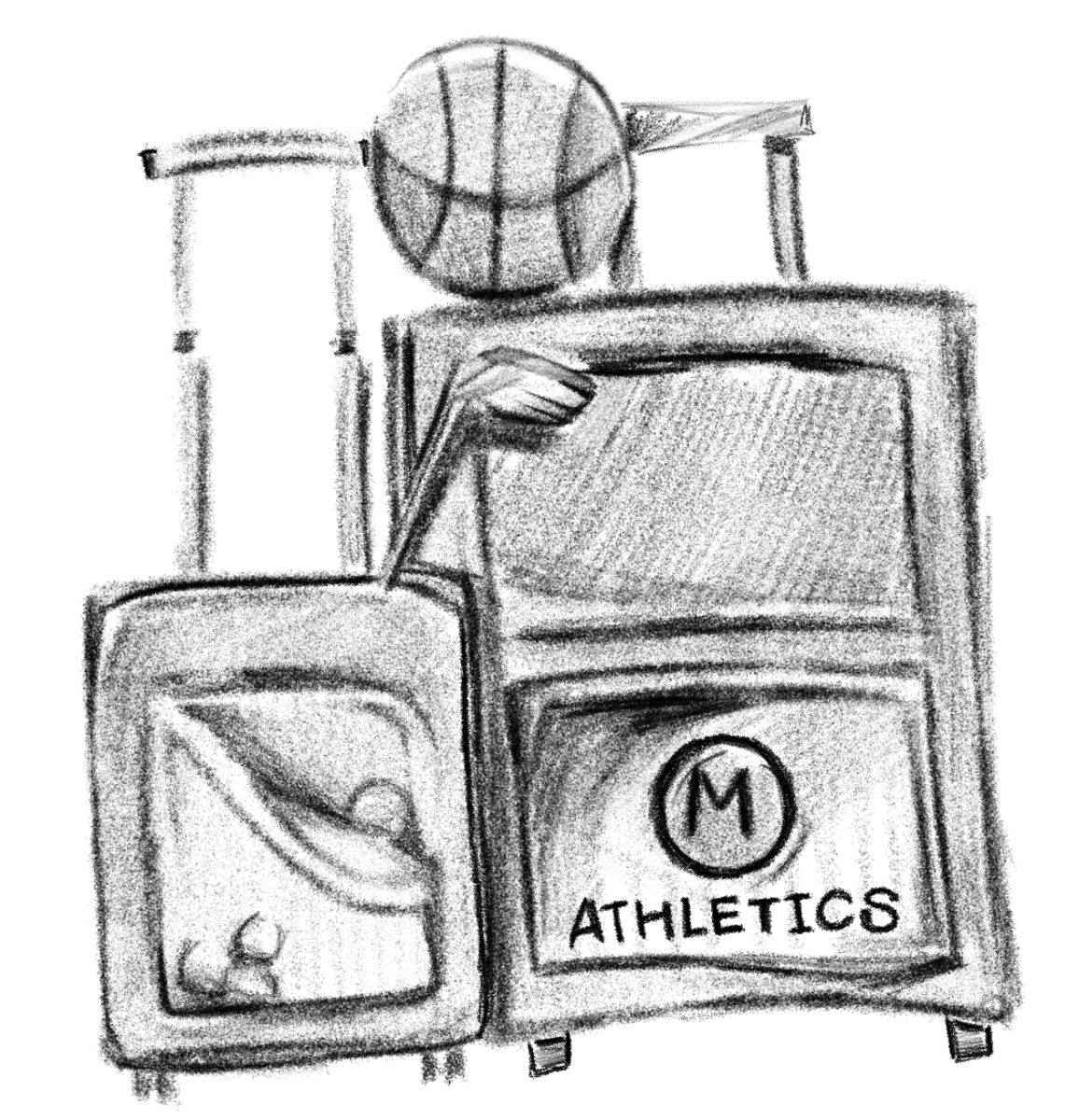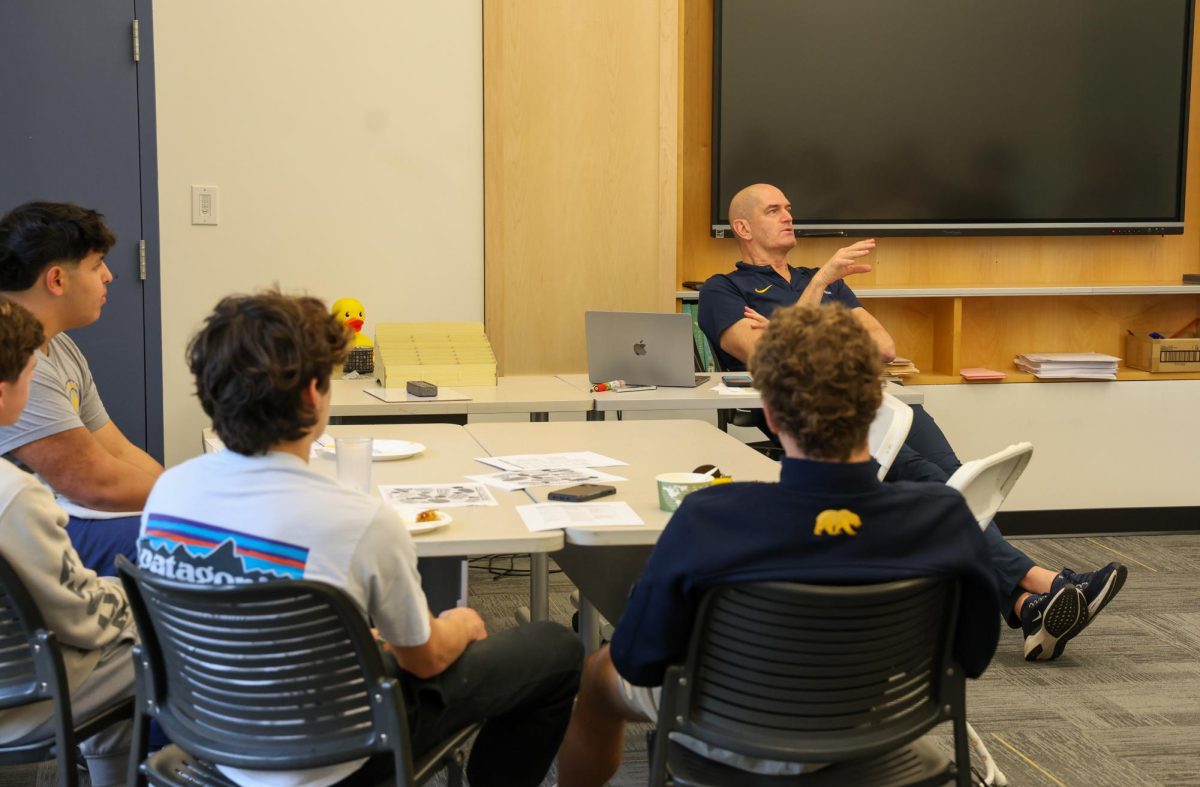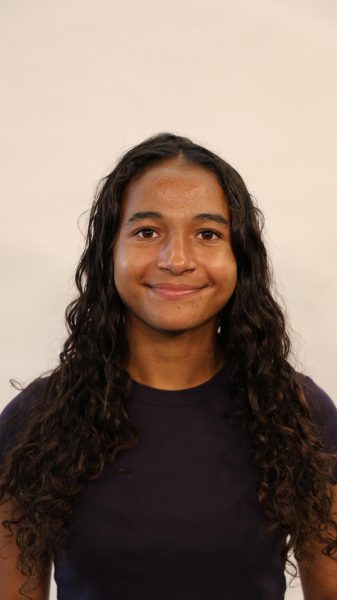When passing by Wunderlich Field after school, it’s not uncommon to find several different teams practicing next to each other. Whether it’s a combination of middle and upper school, boys and girls, or winter and spring sports, scheduling conflicts and a lack of space hinder the ability for Menlo’s outdoor sports to effectively practice.
As one of the captains of the varsity girls lacrosse team, senior Kylie Jones organizes captains’ practices during the offseason. However, Jones runs into many problems with finding field space. The captains negotiate for space with other coaches, which in Jones’ view causes an unbalanced power dynamic between the coaches and players. “I think that liaison needs to come from the coaches, not the players,” Jones said. This change in dynamic could be beneficial to better negotiations, especially since not even half a field is needed for a lacrosse team, according to Jones.
When official practices for spring sports begin in February, field space is still limited as boys and girls soccer are finishing up their seasons. While varsity boys lacrosse head coach Blake Kim holds some of his team’s practices off-site at Holbrook Palmer Park, the girls stay behind, finding portions of Wunderlich or Cartan Field to practice on. “The girls are often left with no [place] to go unless they want to go offsite,” Jones said.
Although Holbrook Palmer guarantees ample space for the boys to practice, the situation is not perfect. “This arrangement is far from ideal: it’s not free, it requires bus transportation as well as lugging a lot of equipment to/from the park, it’s a thick grass surface that is not as regularly mowed as we’d prefer and is impossible to use when it rains, and there are often pedestrians scattered around the park,” Kim wrote in an email to The Coat of Arms.
Likewise, varsity boys soccer head coach Daniel Hicker finds that space is limited for his practices. Hicker plans each week in accordance with the amount of field space he has for the week. “When we are only able to utilize half a field, or less […] we are not able to train the game, only pieces of it,” Hicker said. Now, with the addition of the newly turfed baseball field, Hicker feels fortunate with the gain of a field, even though it doesn’t have lines for soccer.
Varsity baseball head coach David Trujillo is thankful for the upgraded field as well. “We are so lucky to have our baseball field. It is the nicest high school baseball field I have ever seen,” Trujillo wrote in an email to The Coat of Arms.
Trujillo said the only space he would improve is the batting cages, which are out of commission in the event of poor weather. The team sometimes goes to California Baseball Farm Club when it rains since baseball equipment gets ruined when it is wet.
“If the batting cages had a real roof that protected them from weather and rain we would be able to run productive practices and would not have to go off site,” Trujillo wrote.
As a former club soccer coach, Hicker understands how soccer can be a hard sport to accommodate space for. “Tennis has their tennis courts, basketball has their basketball court[s], baseball has their baseball field. When you get to soccer, or other sports with field time and space needs, it’s [a situation where] you see space and take space for the coaches. Every bit of productive playing surface is helpful, but not always conducive for the level we aspire to reach,” Hicker said.
Although Hicker is always open to sharing where fields are needed, it’s difficult to keep adapting. Additionally, Hicker’s position as the Director of Sports Performance means he must plan out both middle and high school soccer field spaces while accommodating other sports. Still, Hicker keeps a positive mindset even amidst a slew of scheduling conflicts.
“On the production side, we [coaches] all work together to find a way to get the job done,” he said.
Director of Athletics Earl Koberlein notes that the strict lighting controls neighbors and the city of Atherton have instituted at Menlo fields pose a challenge when dividing up field space. Light restrictions leave a constant rush against the sunset when practicing, especially in the winter season.
“If we had lights, it would be a lot easier to expand the day, like how basketball is able to stagger practices,” Koberlein said.
Koberlein is excited about the flexibility that the newly turfed baseball field now provides for teams. During the winter season, the space alleviates some of the overfill that middle and upper school teams encounter.
Although the new baseball field allows teams to find temporary fixes, Koberlein ultimately hopes to turf Cartan as an effort to combat the recurrent rain-induced field closures. He is not alone in this sentiment –– in the 20 years predating Koberlein’s arrival at Menlo, there has been on and off talk of turfing the field.
The proposal to add turf to Cartan is part of a master plan in which Menlo hopes to redo the stadium, the tennis courts and even put a pool next to Cartan football field. Yet, Koberlein said that several obstacles, such as the fact that turfing the football field would cost $2 million, the need to reach an agreement with Menlo College and Atherton’s building restrictions have blocked progress.










